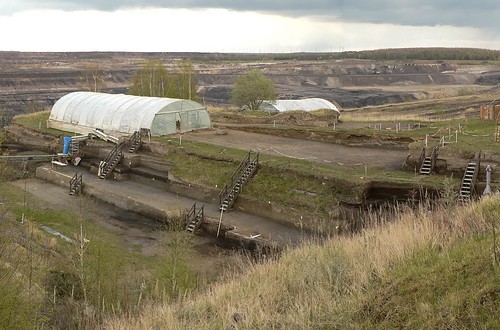Archaeologists are mapping the area before road is replaced and teasing secrets from the ancient landscape
Some 3,400 years before the roaring torrent of the A303 road sliced theStonehenge landscape in half, some people cut a beautiful pit a metre deep into the chalk with no tools except picks made of red deer antlers.
They may have had primitive tools, but there was nothing primitive about their skills: the bottom of the pit was so neatly levelled that you could balance a beaker of mead on it without spilling a drop.
As druids and tourists head towards Stonehenge for the winter solstice, which falls this year on 22 December, when the midwinter sun should set framed perfectly by the giant stones, Historic England archaeologists are hard at work teasing ancient secrets out of the landscape.
Read the rest of this article...




